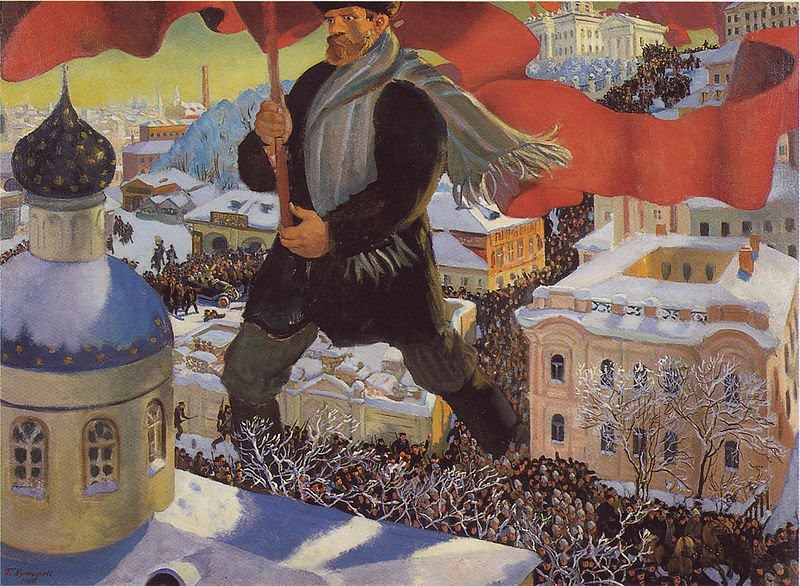Part II
How Stalin Used SMERSH to Murder Millions
 |
A propaganda poster reminding Soviet citizens to help "Ruthlessly destroy fascist saboteurs."
|
On paper, SMERSH was a wartime creation to enhance military counterintelligence in the field. It served as a rickety bridge linking the NKVD/NKGB to the MGB/KGB. As a type of "Special Department" or "OO" in abbreviated Russian, SMERSH was supposed to be strictly drawn from the military counterintelligence section of the GUGB (formerly the OGPU - All-Union State Political Directorate but subordinated to the NKVD in 1941). Military counterintelligence had always been and would remain until 1991 under the purview of the state security organizations from the Cheka to the KGB. Military intelligence was under the direction of the GRU (Russian: Главное Разведывательное Управление or transliterated - Glavnoye Razvedyvatel'noye Upravleniye) or Main Intelligence Directorate (of the USSR Army General Staff). However, in practice, when SMERSH was officially formed in March-April 1943 it had numerous incarnations both in its own branch and subordinated groups within the NKVD which were written/typed in official documents as "Smersh" rather than the all-caps "SMERSH" befitting the acronym it is for the Russian smert' shpionam, or "Death to Spies," allegedly coined by Stalin himself.
 |
"Do not talk on the phone [carelessly]. A spy could be listening." A
propaganda poster showing an NKVD officer hanging up the phone another soldier was attempting to use. |
The creation of SMERSH was necessary on many levels - regular Red Army/Navy desertions to problems of Nazi spies and saboteurs infiltrating the Soviet ranks, anti-Soviet partisan groups and even the "peasants" of many of the newly (re-)occupied territories along the fronts between the Soviets and the Germans - all required some "organized assistance" to either work with Stalin's government or be hounded and/or crushed by it. However, as "OO" units and eventually SMERSH grew in size and power, there were practically no guards of the guardians. No one within the ranks of the Soviet Military or civilian population was immune to being arrested, tortured, jailed, sent to prison/work camps (not unlike Nazi concentration camps) or simply executed, often in front of the soldiers they served with or in the case of civilians, in front of the workers they once toiled along side. However, officers in SMERSH were being watched by the NKVD's Smersh agents and vice versa. This "overseeing" allowed Lavrentii Beria (head of the NKVD) to maintain his power after most of the main intelligence/counterintelligence duties were transferred to the reformed NKGB and SMERSH.
When Stalin recombined all of the security services under the NKVD in 1941 after the Nazis began their blitzkrieg into the Soviet Union in a three-prong attack aimed at the southern regions, Moscow and Leningrad, he continued to keep the Special Services ("OO") in charge of military counterintelligence. Military counterintelligence consisted of many specific duties, some of which are mentioned above such as ferreting out fascist spies (both real and imagined), preventing desertion - often by shooting those that retreated without a direct order from the generals who ordered the original attack - and gathering information from captured German soldiers. These were some of the basic duties of SMERSH later, once they were created to replace - or rather enhance - the OO, but the actual full spectrum of atrocities committed by SMERSH agents has only come to light in recent years.
SMERSH only came into existence once the momentum shifted in favor of the Allies in April 1943, and powers were once again redistributed among the Soviet security services. Such was the nature of SMERSH that the mere existence of the organization was denied by the Soviets and then only until fairly recently by the Russian government.
At the same time on April 19, 1943 the NKGB - People's Commissariat for State Security - was reestablished as the Soviet "secret police" as well as its foreign and counter-intelligence service. The NKVD was left to perform the tasks its name suggests - "internal affairs." However, the "affairs" addressed by the NKVD more often than not included the widespread repression and elimination of political dissent with an ever-growing number of casualties.
SMERSH was not simply the third branch of the wartime Soviet intelligence system, it was a vast network of enforcers of Stalin's will as well as that of other elite members of the security services who regularly abused their authority. The list of atrocities attributed to members of SMERSH - both under orders and acting alone - rivals that of the NKVD itself - even during the "terror" of the 1930s.
 |
"Help the Red Army to capture Spies and Saboteurs"
- another Soviet intelligence propaganda poster. |
SMERSH only came into existence once the momentum shifted in favor of the Allies in April 1943, and powers were once again redistributed among the Soviet security services. Such was the nature of SMERSH that the mere existence of the organization was denied by the Soviets and then only until fairly recently by the Russian government.
At the same time on April 19, 1943 the NKGB - People's Commissariat for State Security - was reestablished as the Soviet "secret police" as well as its foreign and counter-intelligence service. The NKVD was left to perform the tasks its name suggests - "internal affairs." However, the "affairs" addressed by the NKVD more often than not included the widespread repression and elimination of political dissent with an ever-growing number of casualties.
SMERSH was not simply the third branch of the wartime Soviet intelligence system, it was a vast network of enforcers of Stalin's will as well as that of other elite members of the security services who regularly abused their authority. The list of atrocities attributed to members of SMERSH - both under orders and acting alone - rivals that of the NKVD itself - even during the "terror" of the 1930s.

